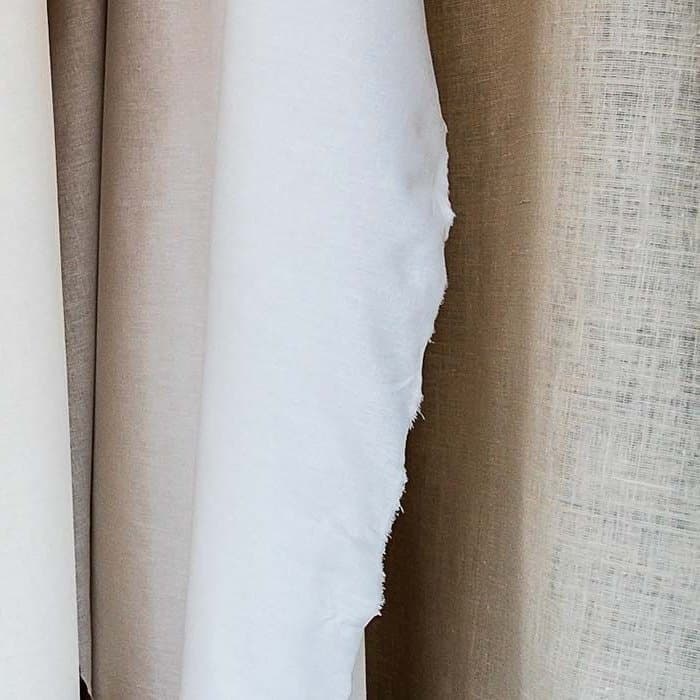Sewing enthusiasts, prepare to uncover the secrets of working with hemp fabric! Whether you’re a seasoned sewist or just starting out, you may be wondering if there are any special techniques required for working with this eco-friendly material. In this article, we will explore the magic behind sewing with hemp fabric and provide you with valuable tips and tricks to ensure your sewing journey is smooth and successful. So, grab your thread and needle, and let’s dive into the world of hemp fabric!
Choosing the Right Needle
When it comes to sewing with hemp fabric, choosing the right needle is crucial for a successful project. There are a few key factors to consider while picking the needle that will yield the best results.
Considering the Fabric Weight
One of the important considerations when choosing a needle for hemp fabric is the weight of the fabric. Hemp fabric can range from lightweight to heavy, so selecting a needle that matches the fabric’s weight is essential. For lightweight hemp fabric, a size 70/10 or 80/12 needle will work well, while heavier fabrics may require a size 90/14 or even a 100/16 needle. By using the appropriate needle size, you can ensure that it glides through the fabric smoothly without causing any damage.
Using Sharp Needles
Another crucial aspect of selecting the right needle for sewing with hemp fabric is to use sharp needles. Hemp fabric, although durable, can be dense, and using a dull needle can lead to skipped stitches, snagging, or even fabric damage. Opting for sharp needles, such as Microtex or Universal needles, will ensure smooth penetration through the fabric, resulting in clean and precise stitches.
Opting for Ballpoint Needles
If you are working with hemp knit fabric, it is advisable to use a ballpoint needle. Ballpoint needles have rounded tips that slide between the knit loops instead of piercing them, preventing snags or runs in the fabric. This type of needle is ideal for jersey or interlock hemp knits, as it allows for easy and seamless stitching without compromising the fabric’s stretch and structure.
Selecting the Proper Thread
Choosing the right thread is just as important as selecting the correct needle when sewing with hemp fabric. The thread you choose should complement the fabric and provide the necessary strength and durability for your project.
Choosing the Right Weight
Selecting the proper thread weight is vital to ensure the longevity of your stitches. For most hemp fabrics, an all-purpose thread with a medium weight will suffice. A polyester or cotton thread in a thickness of 40 or 50 is a good choice for general sewing. However, if you are working with heavy-duty hemp fabrics, such as canvas or upholstery-grade hemp, opting for a thicker thread, like nylon or topstitching thread, will provide added strength and durability to your seams.
Using Hemp Thread vs. Other Types
While hemp fabric is often sewn with traditional threads, using hemp thread can enhance the overall aesthetic and sustainability of your project. Hemp thread is strong, durable, and biodegradable, making it an eco-friendly choice for your sewing needs. It blends seamlessly with the fabric, resulting in a cohesive and natural-looking finish. Additionally, hemp thread has excellent tensile strength, making it suitable for projects that require extra durability, such as bags or heavy-duty garments.
Considering Color and Durability
When choosing the thread color for your hemp fabric project, it is essential to consider both aesthetics and durability. Opt for a thread color that complements your fabric and enhances the final look of your creation. Additionally, ensure that the thread is colorfast and resistant to fading, especially if your project will be subjected to frequent washing or outdoor use. By considering both color and durability, you can achieve visually stunning results that will stand the test of time.
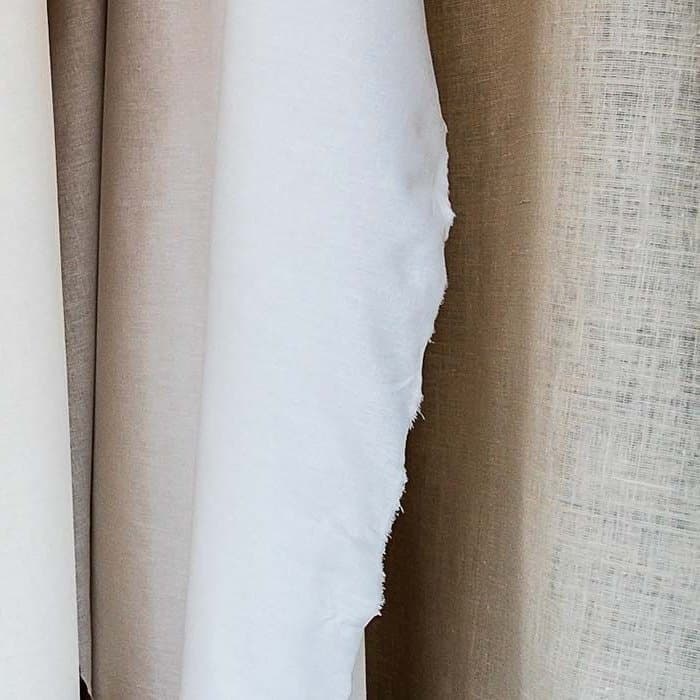
This image is property of www.thesewingdirectory.co.uk.
Prewashing and Prepping the Fabric
Before diving into your sewing project, it is crucial to prewash and prep your hemp fabric properly. This process will help eliminate any potential issues and ensure the best results.
Understanding Shrinkage
Hemp fabric, like most natural fibers, may shrink when exposed to water or heat. To avoid any unwanted surprises after completing your project, it is essential to prewash the fabric to allow for any shrinkage to occur. Read the care instructions on your fabric before washing and follow them accordingly. Generally, washing the fabric in cold water and tumble drying it on low heat is a safe bet. Prewashing will not only prevent any significant shrinkage but also eliminate any residual starch or chemicals, allowing the fabric to achieve its natural drape and softness.
Removing Hemp Fabric’s Excess Starch
Hemp fabric sometimes comes with excess starch or sizing, which can affect the fabric’s texture and handling. To remove this starch, soak the fabric in warm water for around 30 minutes before washing it. Gently hand-wash the fabric, rinse it thoroughly, and air dry or tumble dry on low heat. This process will help the fabric regain its natural suppleness and make it easier to work with during the sewing process.
Avoiding Excessive Distortion
While prewashing hemp fabric is essential, it is crucial to handle it with care to prevent excessive distortion. After the fabric is washed, avoid wringing or twisting it vigorously, as this can stretch or distort the fibers. Instead, gently squeeze out the excess water and allow the fabric to air dry or tumble dry on low heat. By treating the fabric gently, you will preserve its integrity and ensure that it remains in optimal condition for your sewing project.
Cutting and Marking Techniques
To achieve precise and professional results when sewing with hemp fabric, using the correct cutting and marking techniques is crucial. Proper tools and methods will help ensure accuracy and prevent any unnecessary mistakes.
Using the Right Tools
Investing in high-quality cutting tools is a wise choice when working with hemp fabric. A sharp pair of fabric scissors, preferably with long blades, will make cutting through the dense fabric effortless and precise. Alternatively, a rotary cutter with a fresh blade can also be an excellent option for cutting straight lines or patterns. Additionally, using a large cutting mat or a smooth work surface will provide stability and accuracy while cutting the fabric.
Marking Methods for Hemp Fabric
Hemp fabric may require specific marking methods to ensure your sewing lines and pattern placements are accurate. Tailor’s chalk or fabric markers that can be easily removed or washed out are suitable for most hemp fabrics. However, it is always recommended to test the marking method on a scrap piece of fabric before applying it to your project. Some hemp fabrics, particularly lighter-colored ones, may show residue or stains from certain markers, so it’s essential to choose a method that is compatible with your specific fabric.
Cutting with Precision
When cutting hemp fabric, it is crucial to take your time and cut with precision. Use long, smooth strokes with your scissors or rotary cutter, applying even pressure to ensure clean and accurate cuts. Double-check your measurements and pattern placements before making each cut to avoid any costly mistakes. Taking your time and cutting with precision will result in well-fitting pieces that fit together seamlessly during the sewing process.
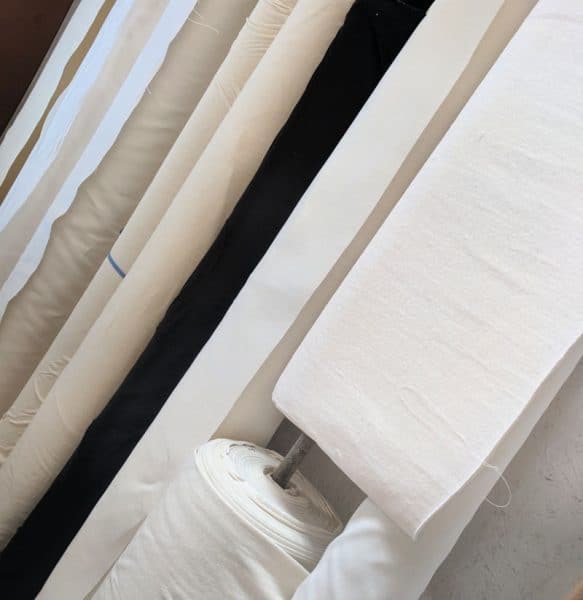
This image is property of www.thesewingdirectory.co.uk.
Seam Finishes for Hemp Fabric
The choice of seam finish can greatly impact the overall look and durability of your hemp fabric project. Selecting the appropriate seam finish will prevent fraying, strengthen the seams, and give your project a polished and professional appearance.
Plain Seam
A plain seam is the most basic type of seam finish and is perfectly suitable for most hemp fabric projects. This type of seam involves joining two fabric pieces by sewing them with a straight stitch and finishing the raw edges with zigzag stitching or an overlock stitch. The plain seam is quick, easy to execute, and provides adequate strength for most types of hemp fabric.
French Seam
For a more refined and neat finish, a French seam is an excellent choice. This seam finish encloses the raw edges within the seam itself, giving the project a clean appearance on both the inside and outside. To create a French seam, sew the fabric wrong sides together with a narrow seam allowance, trim the excess fabric, and then fold it with right sides together. Finally, sew along the folded edge to secure the seam. The French seam is particularly suitable for lightweight or sheer hemp fabrics, as it prevents any fraying and creates a beautiful, finished edge.
Flat-Felled Seam
A flat-felled seam is a durable and decorative seam finish that is commonly used in constructing jeans and other heavy-duty garments. This type of seam involves encasing the raw edges between two folded fabric layers, creating a sturdy and visually appealing seam. It is achieved by sewing the fabric with a narrow seam allowance, folding one fabric edge over the other, and stitching both layers together. Flat-felled seams work well for heavyweight hemp fabrics or projects that require extra strength and durability.
Using the Correct Stitch Length
The appropriate stitch length is crucial for achieving strong and durable seams when sewing with hemp fabric. Choosing the correct stitch length will prevent the fabric from puckering, ensure smooth stitching, and maintain the integrity of your project.
Considering Hemp Fabric Thickness
Hemp fabric can vary in thickness and density, and the stitch length should be adjusted accordingly. For lightweight hemp fabrics, a shorter stitch length, such as 2-2.5mm, is recommended. This will help prevent any puckering or distortion of the fabric. For heavyweight hemp fabrics or seams that require added strength, a longer stitch length, around 3-3.5mm, can be used.
Testing Different Stitch Lengths
Before starting your sewing project, it is always a good idea to test different stitch lengths on a scrap piece of fabric. This will allow you to assess how the fabric responds to different stitch lengths and determine which length achieves the desired result. By testing beforehand, you can avoid any unwanted surprises and ensure that your seams are strong and even.
Ensuring Seam Durability
Selecting the right stitch length is essential for ensuring the durability of your seams. Shorter stitches create a denser seam that can withstand regular wear and tear, while longer stitches provide flexibility for intricate or decorative stitching. Maintaining balanced tension and choosing the appropriate stitch length for your specific hemp fabric will result in strong, durable seams that will withstand the test of time.
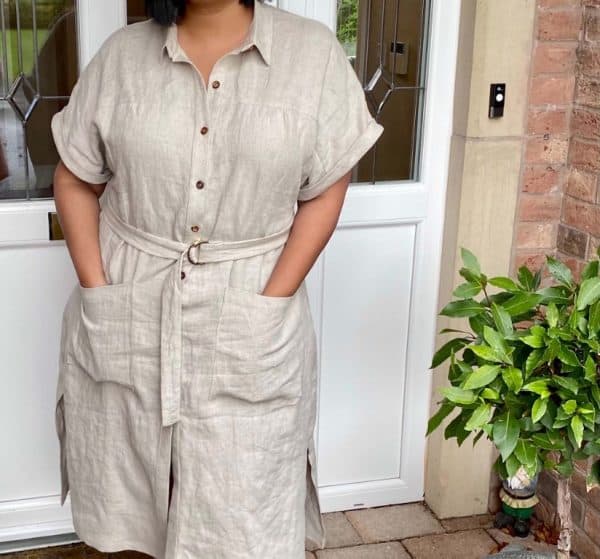
This image is property of www.thesewingdirectory.co.uk.
Pressing and Ironing Tips
Proper pressing and ironing techniques are crucial for achieving professional-looking results when sewing with hemp fabric. The use of appropriate temperature, tools, and protective measures will ensure that your fabric remains in optimal condition throughout the sewing process.
Setting the Right Temperature
Hemp fabric can be sensitive to heat, so it is important to set your iron to the appropriate temperature. Start with a low to medium heat setting and gradually increase if necessary, testing on a scrap piece of fabric first. Avoid using high temperatures, as they can scorch or damage the fabric. Additionally, always refer to the fabric care instructions to ensure that you are using the recommended temperature range.
Using a Press Cloth
To protect your hemp fabric from direct heat, using a press cloth is highly recommended. A press cloth, usually made of lightweight cotton or muslin, acts as a barrier between the iron and the fabric. It helps distribute the heat evenly and prevents any shiny marks or damage that may occur from direct contact. Simply place the press cloth over the fabric and press as usual. This technique ensures that your fabric remains unblemished and maintains its original appearance.
Avoiding Shiny Marks on Hemp Fabric
Hemp fabric, especially lighter-colored or delicate varieties, can be prone to shiny marks caused by heat and pressure. To prevent these shiny marks, avoid pressing the fabric extensively in one area and keep the iron moving continuously. By distributing the heat evenly and using a gentle touch, you can maintain the fabric’s natural texture and sheen.
Working with Hemp Canvas
Hemp canvas is a heavy and durable fabric commonly used for bags, upholstery, or outdoor projects. Sewing with hemp canvas requires specific techniques to handle its bulk and thickness effectively.
Choosing the Right Needle and Thread
When working with hemp canvas, it is important to use a heavyweight needle and thread that can withstand the fabric’s density. A size 100/16 or even a size 110/18 needle is recommended to penetrate the thick layers of hemp canvas. Similarly, opt for a heavyweight, durable thread such as nylon or upholstery-grade polyester thread to ensure strong and long-lasting seams. By using the appropriate needle and thread, you can confidently tackle hemp canvas projects with ease.
Handling Bulk and Thickness
Hemp canvas can be quite bulky, making it challenging to maneuver through a sewing machine. To ease this process, consider using a walking foot or a Teflon foot attachment on your sewing machine. These presser feet help feed the fabric smoothly and prevent any slipping or shifting, resulting in accurate and straight stitches. Additionally, choose appropriate seam finishes, such as flat-felled seams, that can accommodate the fabric’s thickness without compromising strength or appearance.
Finishing Techniques
Hemp canvas projects often benefit from additional finishing techniques to enhance their appearance and durability. Adding reinforcements, such as bartacks or extra rows of stitching, to high-stress areas will provide extra strength and prevent seam breakage. Topstitching along the seams or edges can also add a decorative touch while ensuring that the fabric layers lie flat and secure. These finishing techniques will not only enhance the overall aesthetic of your hemp canvas project but also increase its longevity.
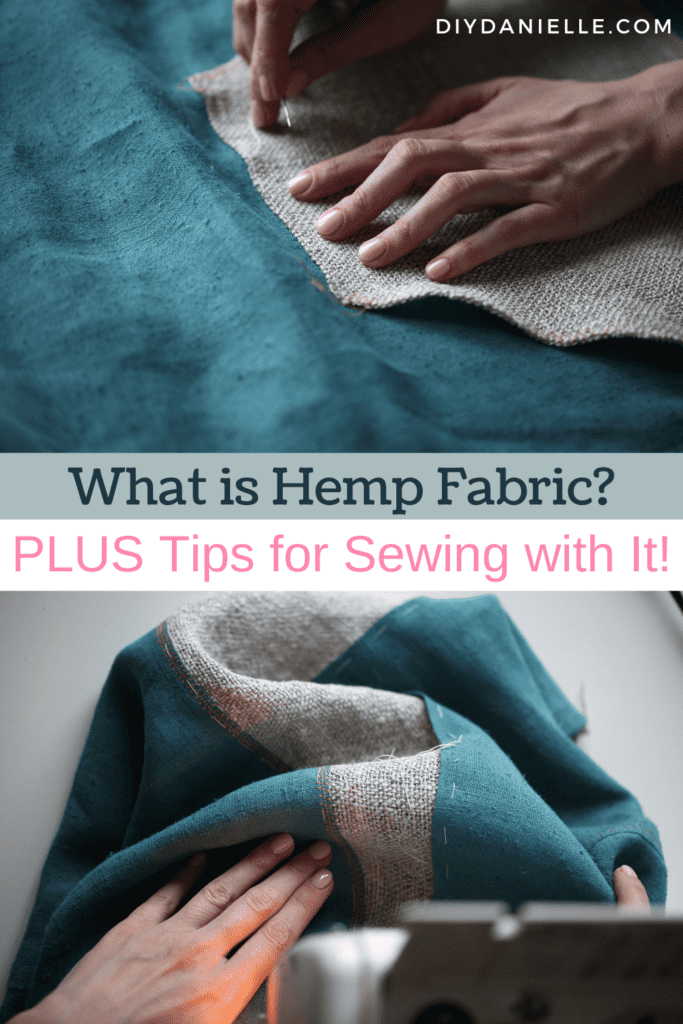
This image is property of diydanielle.com.
Using Hemp Bias Tape
Hemp bias tape is a versatile and eco-friendly trim that can be used to finish edges, bind seams, or add decorative details to your hemp fabric projects. Making and applying your own bias tape can yield unique and personalized results.
Making Your Own Bias Tape
Making bias tape from hemp fabric allows you to have complete control over the color, pattern, and width of the tape. To make your own bias tape, cut strips of fabric on the bias (diagonal) to achieve the desired width. Join the strips together on the bias with a diagonal seam, then fold and press the tape in half lengthwise. Finally, attach the bias tape to the edges or seams of your project, either by stitching in the ditch or using a topstitch. Making your own bias tape ensures that it matches your project perfectly and adds a custom touch.
Applying Bias Tape to Edges
Hemp bias tape can be an excellent choice for finishing raw edges or adding a clean, decorative edge to your projects. To apply bias tape to edges, open up the bias tape and align its raw edge with the fabric edge. Stitch the bias tape to the fabric with a straight stitch, close to the folded edge of the tape. Fold the bias tape over the fabric edge and secure it in place with a second row of stitching. This technique encloses the raw edge within the tape, preventing fraying and creating a neat and professional-looking finish.
Creating Decorative Trims
Hemp bias tape can also be used creatively to add decorative trims to your projects. From accentuating pockets to creating piping or borders, bias tape offers endless possibilities for adding unique details. Experiment with contrasting colors or patterns to make your trims stand out, or choose a bias tape that complements the fabric for a more subtle effect. Sewing hemp fabric projects with decorative bias tape allows you to infuse your personal style and creativity into each design.
Tackling Hemming
Hemming is an essential step in completing any garment or project made from hemp fabric. The right hemming technique, adjusted hem length, and proper finishing will give your hemp fabric project a polished and professional appearance.
Choosing the Right Hemming Technique
There are various hemming techniques to choose from when working with hemp fabric, depending on the design and purpose of the project. For a clean and simple finish, a double-folded hem is a popular choice. This involves folding the raw edge of the fabric twice, pressing it, and then stitching along the folded edge. Another option is a blind hem, which creates an almost invisible finish on the right side of the fabric. This technique requires folding the fabric, creating a small hem allowance, and stitching it with small, nearly invisible stitches. Choose the hemming technique that best suits your project’s needs and complements the overall design.
Adjusting Hem Length for Hemp
When hemming hemp fabric, it is important to consider its natural drape and weight. Hemp fabric tends to hang differently than lighter, more flowing fabrics. Ensure that you account for any necessary adjustments in hem length to achieve the desired silhouette and look. Longer hems may require additional support, such as interfacing, to prevent sagging, while shorter hems may require careful attention to ensure that the fabric lies flat and does not curl up. By adjusting the hem length accordingly, you can create a neat and balanced finish that complements the fabric’s characteristics.
Achieving a Neat and Professional Finish
To achieve a neat and professional finish when hemming hemp fabric, attention to detail is key. Ensure that the seam allowances are pressed and trimmed uniformly, preventing any bulkiness or unevenness in the finished hem. Consider using a twin needle or a decorative stitch for topstitching, especially if your project requires a visible hemline. Take your time to sew the hem accurately and evenly, using matching thread, to create a polished and refined look. A well-executed hem will add that final touch of professionalism to your hemp fabric project.
In conclusion, sewing with hemp fabric requires specific techniques and careful consideration of various factors. From choosing the right needle and thread to prewashing and prepping the fabric, every step plays a crucial role in achieving the best results. Cutting and marking accurately, selecting appropriate seam finishes, and using the correct stitch length contribute to the durability and aesthetics of your project. Proper pressing and ironing, handling bulk and thickness when working with hemp canvas, utilizing hemp bias tape creatively, and achieving a neat hemming finish all add to the overall success of your sewing endeavors. By following these comprehensive techniques and tips, you can confidently embrace the beautiful and sustainable world of sewing with hemp fabric.
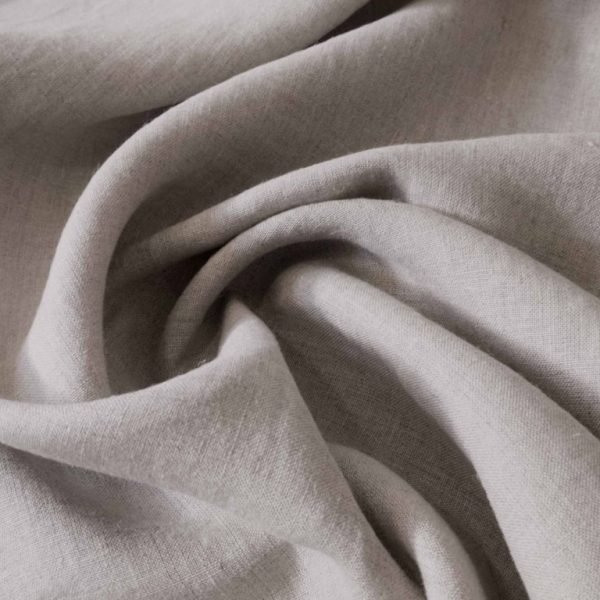
This image is property of www.thesewingdirectory.co.uk.
Recent Posts
Discover how bubble hash is rated on a 1 to 6 scale. From texture and color to aroma and potency, learn the key factors that determine the quality of bubble hash. Whether you're a seasoned cannabis...
Looking to learn about the most popular style of hash? This article explores the different types, from traditional to bubble hash, and reveals the people's favorite. Join us on a journey through the...

